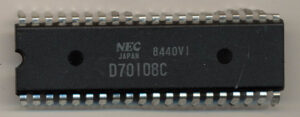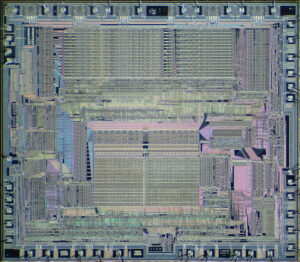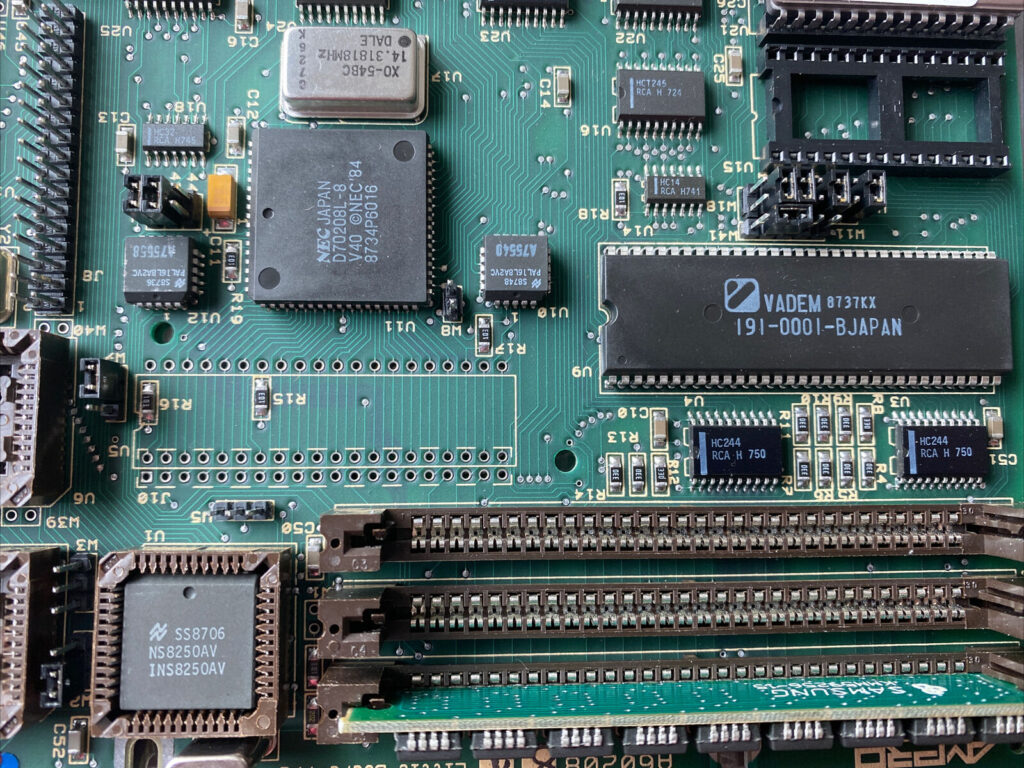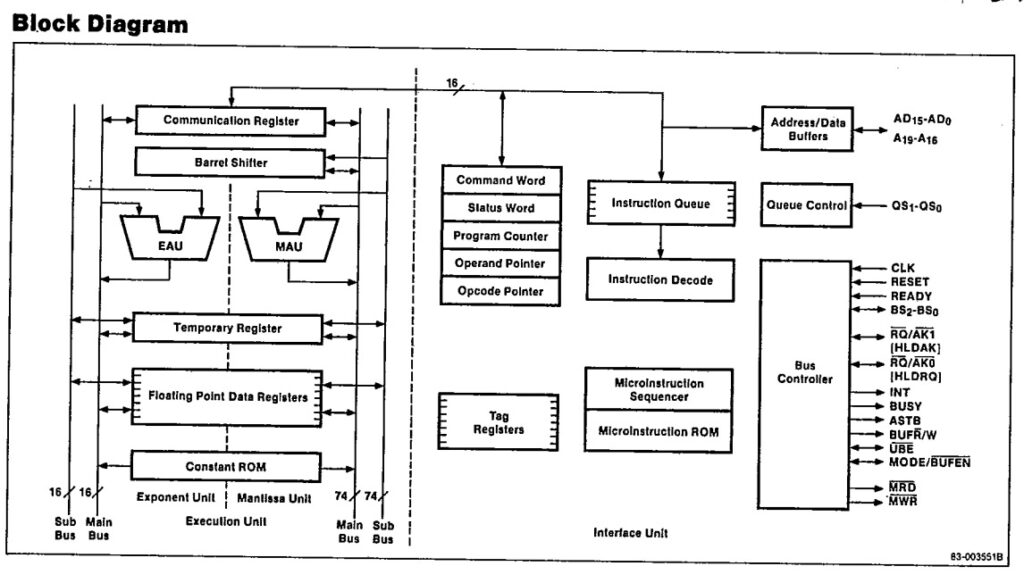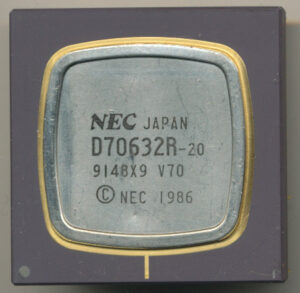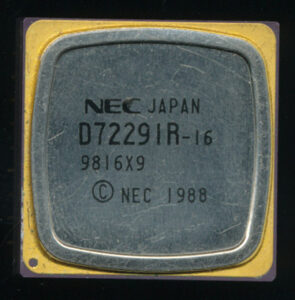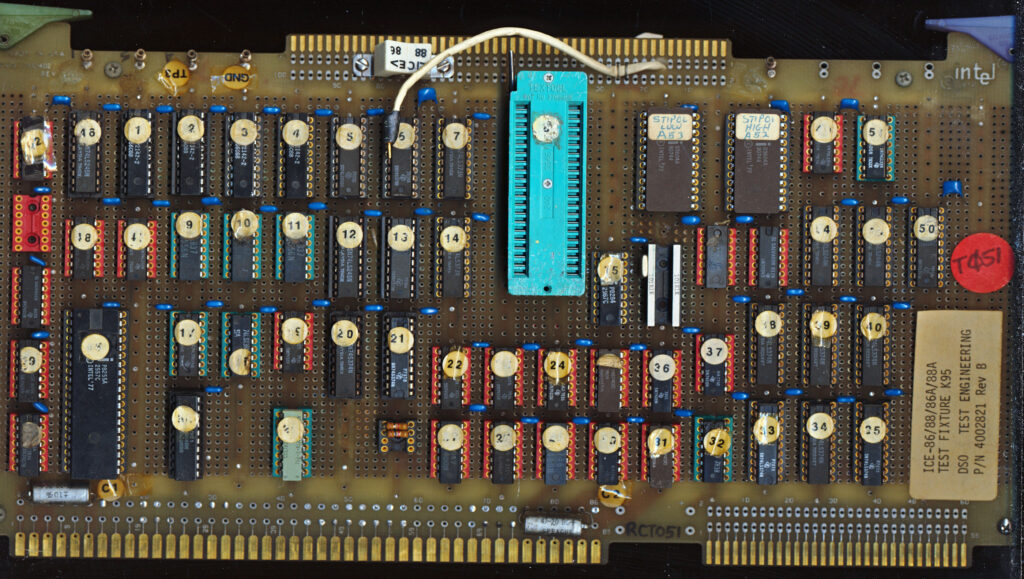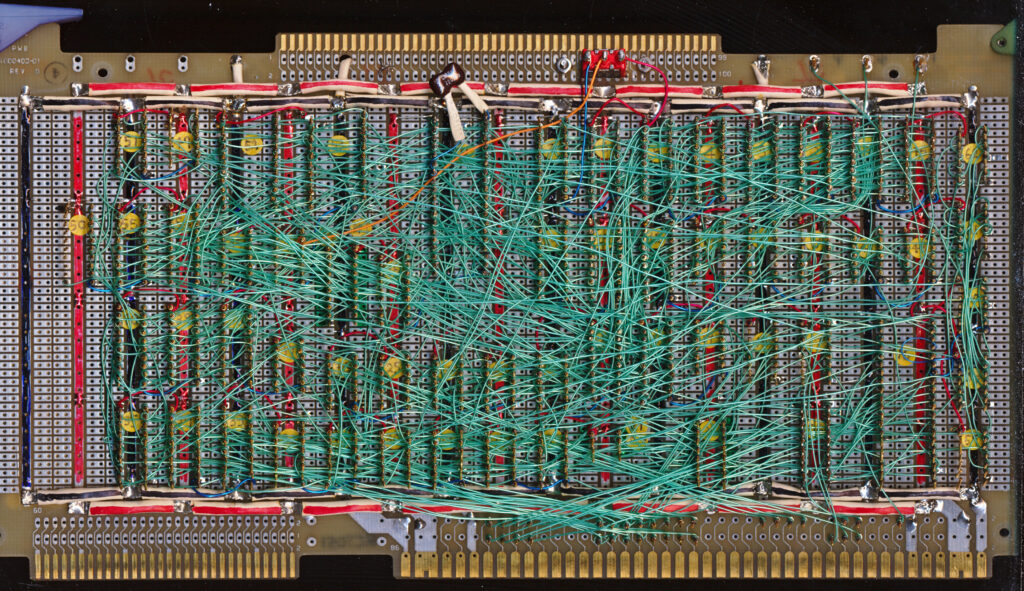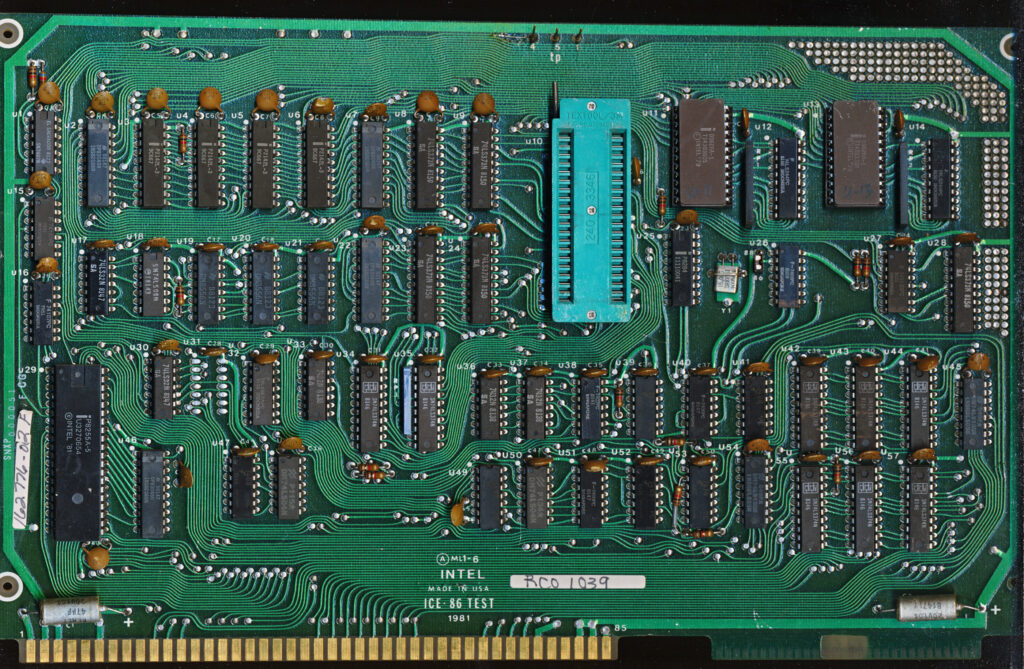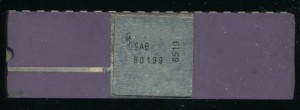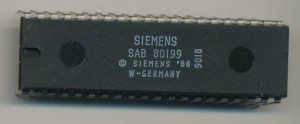NEC’s Forgotten FPUs
NEC had a cross license agreement with Intel dating back to April of 1976 that allowed each company to make/sell products based on each others patents. This was particularly important in the 1970’s as having a viable ‘second source’ for your designs was considered critical for it to be viable in the market. This was especially true for Intel, who wanted to get into the Japanese market. In 1979 NEC began to produce and sell the 8086 and 8088 processors. NEC wasn’t going to succeed by just being a second source to Intel though, designing their own processors was of great importance. While producing the 8086/8088 they also began working on their own version, which would be an enhanced 8086/8088 processor.
The result was the rather well known V20/V30 processors of 1984. These were not just clones of the Intel MCS-86 (though determining this took several court cases and resulted in the Chip Act of 1984). The V30 had some pretty big differences, notably, internally it had dual 16-bit busses, allowed data to be moved much more efficiently, as data could be moved into and out of a register at the same time (nearly). It also increased the microinstruction word from 21 bits to 29 bits, added a hardware effective address generator, additional instruction pointers, and a hardware shift/loop counter. Taking advantage of these features added some new instructions as well, 156 compared to the 8086’s base 133. The V30/V20 were the beginning of a line of V-series processors. NEC went on to make ‘186/188 style processor (the V40/V50) as well as a series of microcontroller versions (V25/V35 and others). The V20/V30 were to be supported by a math coprocessor like the 8087 called the upd72091. Very little info is available on the 72091 as it was cancelled very early on in its design, as by 1984-1985 it was already out of date. Its replacement was to be a bit more powerful.
Design of the the upd72191 started likely at the same time the V30 was released, around 1984-85, with specifications released in 1986, and plans for chips by 1987. This chip was in an advanced state of planning, such that many products, including motherboards (such as the Ampro Little Board PC) and industrial controllers designed with sockets for it. Preliminary datasheets exist, but alas, no chips seem to be found.
The upd72191 was made in CMOS and is a bit like an enhanced 80C187 but with support for the V20/V30. It is fully IEEE-754 compatible (the 8087 wasn’t as the standard wasn’t finished yet) and supports a similar instruction set as the 80C187 (and thus the 80387). Unlike the 8087 it supports the full set of Exponential, Trig, Logarithmic, and Hyperbolic instructions. The 8087 was somewhat limited in this, as it was already pushing the limits of what was possible on a single chip at thee time of its release. The 72191 supports FSIN/FCOS which the 8087 doesn’t and many other functions (its full instruction set could not be found). The 72191 has a mode pin that selects between interfacing between the V20/V30 and the V40/V50, (as these talked to coprocessors differently) so it was compatible with 4 distinct processors. The 80C187 could only be used with the 80186 and the 8087 could only be used with the 8086/8088.
Looking at the block diagram of the ‘191 we notice something else, its a dual bus design, much like the V30 processor. Internally there are a pair of 74-bit busses for the mantissa (fraction) side and a pair of 16-bit busses for the exponent side. This is a striking difference from that of the 8087 and the ‘187. The 8087 has a single 16-bit bus for the exponent, and a 64-bit (68-bits into the shifter and ALU) for the mantissa. There are 3 extra bits for enhanced accuracy, and a extra leading bit that is always 1 for floating point math, giving 64 bits of ‘data’.
The dual bus design makes sense as NEC did the same for the V-series. Coupled with the right microcode, it can greatly enhance the speed of the FPU. So why then is the bus expanded to 74-bits for the mantissa? In the 80187 and 80387 this bus is still only 68-bits. We look to the design of NECs follow on FPU for the answer. The upd72291 (and its 32-bit bus 72691 version) are rather different beasts, made for the the V33/V53 x86 CPUs and V60/V70/V80 non x86-CPUs. We’ll talk about them in more detail later, but they share the same 74-bit mantissa as the 72191, and in this case, the designers wrote a paper on its design.
The FPP [72691] is the only floating point processor that provides the power function xy. This function (called FPOWER in the instruction set) is difficult to implement not only for its complex definition but also for sufficient accuracy. The equation Xy = e(y*logeX)
does not give good accuracy because the accuracy error of the log function is augmented by the exponential function. The FPP solves this problem by providing a 74-bit data width for the mantissa data bus.
Being as the 72191 was canceled, the ‘291/691 would in fact have been the only FPU to support this in hardware, but it seems it was first implemented on the ‘191. The solution only works well for larger (greater then 32) values of y, otherwise iterative multiplication is used, but where it can be used it greatly speeds up the calculation.
When the 72191 was canceled NEC thoughtfully provided a single chip solution called the upd9335C for allowing an 8087 to be interfaced to the V40/V50 processors which, like a 186, used a HOLD/HOLDACK bus release protocol instead of the 8086/8088s (and V20/V30s) REQUEST/GRANT. For applications using a V20/V30, an 8087 could be used directly.
In 1989 NEC released the next of the V-series, the V60, V70 and later the V80 processors. These were a departure from the previous in that they were no longer based on the x86 architecture, but rather a completely new ISA (though the V60 and V70 had a V20/V30 emulation mode). These were full 32-bit designs, and were Japan’s first widely available 32-bit processors. Of course with a new processor comes the need for a new FPU and NEC had not one, but 2 FPU options for these. The upd72291 and upd72691 are based on the same design, but with some major feature differences. The 72291 is designed to work with processors that have a 16-bit data bus such as the V60. It also could be used with the older V33/V53 x86 designs. Internally it has eight floating point registers and supports all your typical floating point functions as well as vector math functions. The upd72691 is designed for 32-bit data paths, but adds a bit more…
In addition to expanding the register set to 32 FP registers, the ‘691 also added a complete suite of matrix math functions. The ‘691 was made on a 1.2u CMOS process and contained 433,000 transistors. (nearly 50,000 MORE then the V60 processor) Running at 20MHz it was capable of around 6.7MFLOP and supported 24 vector/matric instructions as well as 22 mathematical functions. Like the 72191 it had a 74-bit mantissa datapath, but expanded the exponent path to 17-bits to support double extended precision number formats. It is a highly microcoded design using a 3072 word (43 bit word) microcode ROM, 20% for vector/matrix, 37% for arithmetic, and the rest for exceptions handling and other house keeping instructions. Interestingly, these microps themselves encode additional instructions that NEC call nano-ops, these controlled just the ALU operations of the instruction (the rest being bus control and sequencing). These nano-ops were stored in a 256 word x 74-bit Nano ROM (only 120 words were used, the rest for potential expansion). This was the last of the line of NECs dedicated FPUs (excluding the few MIPS FPUs they made). Its a bit ironic that it seems they canceled as many designs as they made.
…but perhaps they didn’t?


